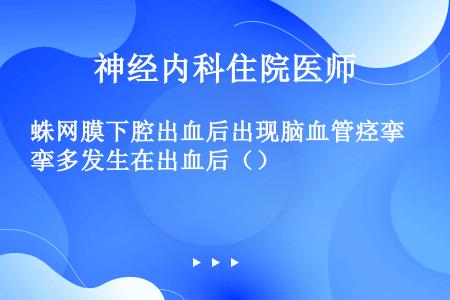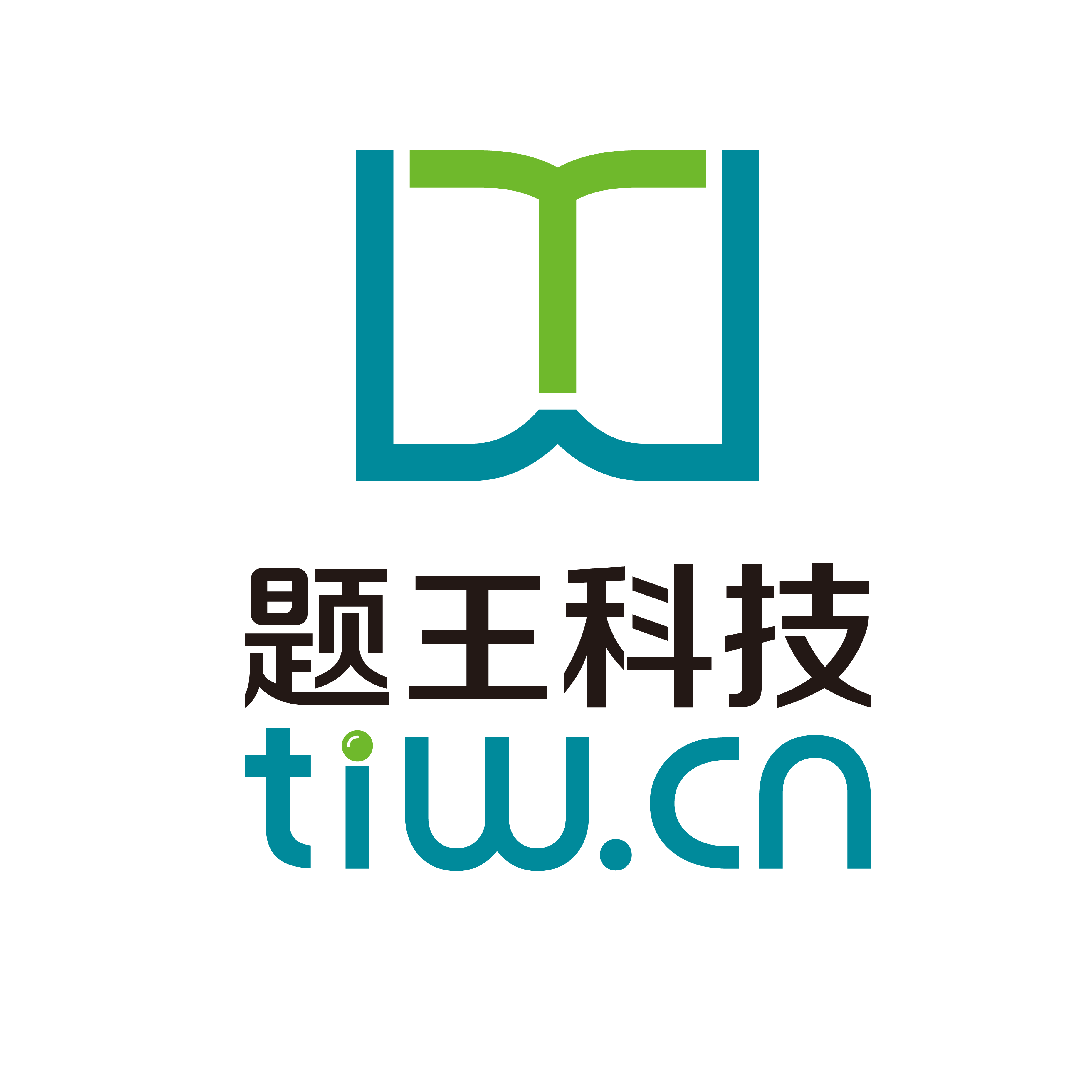 单选题
单选题
蛛网膜下腔出血后出现脑血管痉挛多发生在出血后()
发布日期:2022-07-07

立即
3~14天
1天
14天以后
1个月以后
试题解析
蛛网膜下腔出血
蛛网膜下腔出血(subarachnoid hemorrhage,SAH)指脑底部或脑表面的病变血管破裂,血液直接流入蛛网膜下腔引起的一种临床综合征,又称为原发性蛛网膜下腔出血,约占急性脑卒中的10%,是一种非常严重的常见疾病。世界卫生组织调查显示中国发病率约为2.0/10万人年,亦有报道为每年6-20/10万人。还可见因脑实质内,脑室出血,硬膜外或硬膜下血管破裂,血液穿破脑组织流入蛛网膜下腔,称为继发性蛛网膜下腔出血。
- 外文名
- subarachnoid hemorrhage,SAH
- 传染性
- 无传染性
- 所属科室
- 内科 - 神经内科
- 常见发病部位
- 颅内
- 西医学名
- 蛛网膜下腔出血
- 是否纳入医保
- 是
脑血管痉挛
脑血管痉挛(cerebrovascular spasm)是指颅内动脉的持续性收缩状态。如果仅在血管造影时发现血管处于痉挛状态,患者没有相应的神经功能缺损症状,称为无症状血管痉挛;如果患者出现神经功能缺损症状,则称为症状性血管痉挛,又称迟发性缺血性神经功能障碍。脑血管痉挛是动脉瘤性蛛网膜下腔出血最常见的并发症之一。
- 外文名
- Intracranial Vasospasm
- 就诊科室
- 神经内科
- 常见病因
- 颅内动脉瘤破裂后流入蛛网膜下腔的血液及其降解物导致
- 别名
- 常见发病部位
- 脑血管
- 常见症状
- 意识状态恶化,伴偏瘫、偏身感觉障碍、失语、头痛、呕吐,及体温升高、白细胞计数上升
多发
多发,读音duō fā ,是汉语词汇,意思指的是发生率较高的。
- 中文名
- 多发
- 注音
- ㄉㄨㄛ ㄈㄚ
- 拼音
- duō fā
- 解释
- 发生率较高的
标签: "暂无标签"

题王网让考试变得更简单
扫码关注题王,更多免费功能准备上线!

此试题出现在
In this section, there is one passage followed by a summary. Read the passage carefully and complete the summary below by choosing a maximum of three words from the passage to fill in the spaces 76-80. Remember to write the answers on the Answer Sheet.(10 points) Questions 1-5 are based on the following passage. Paper is different from other waste produce because it comes from a sustainable resource: trees. Unlike the minerals and oil used to make plastics and metals, trees are replaceable. Paper is also biodegradable, so it does not pose as much threat to the environment when it is discarded. While 45 out of every 100 tonnes of wood fibre used to make paper in Australia comes from waste paper, the rest comes directly from virgin fibre from forests and plantations. By world standards this is a good performance since the worldwide average is 33 per cent waste paper. Governments have encouraged waste paper collection and sorting schemes and, at the same time, the paper industry has responded by developing new recycling technologies that have paved the way for even greater utilization of used fibre. As a result, industry’s use of recycled fibres is expected to increase at twice the rate of virgin fibre over the coming years. Already, waste paper constitutes 70% of paper used for packaging, and advances in the technology required to remove ink from the paper have allowed a higher recycled content in newsprint and writing paper. To achieve the benefits of recycling, the community must also contribute. We need to accept a change in the quality of paper products; for example stationery may be less white and of a rougher texture. There also needs to be support from the community for waste paper collection programs. Not only do we need to make the paper available to collectors but it also needs to be separated into different types and sorted from contaminants such as staples, paperclips, string and other miscellaneous items. There are technical limitations to the amount of paper which can be recycled and some paper products cannot be collected for re-use. These include paper in the form of books and permanent records, photographic paper and paper which is badly contaminated. The four most common sources of paper for recycling are factories and retail stores which gather large amounts of packaging material in which goods are delivered, also offices which have unwanted business documents and computer output, paper converters and printers and lastly households which discard newspapers and packaging material. The paper manufacturer pays a price for the paper and may also incur the collection cost. Once collected, the paper has to be sorted by hand by people trained to recognize various types of paper. This is necessary because some types of paper can only be made from particular kinds of recycled fibre. The sorted paper then has to be repulped or mixed with water and broken down into its individual fibres. This mixture is called stock and may contain a wide variety of contaminating materials, particularly if it is made from mixed waste paper which has had little sorting. Various machinery is used to remove other materials from the stock. After passing through the repulping process, the fibres from printed waste paper are grey in colour because the printing ink has soaked into the individual fibres. This recycled material can only be used in products where the grey colour does not matter, such as cardboard boxes but if the grey colour is not acceptable, the fibres must be de-inked. This involves adding chemicals such as caustic soda or other alkalis, soaps and detergents, water-hardening agents such as calcium chloride, frothing agents and bleaching agents. Before the recycled fibres can be made into paper they must be refined or treated in such a way that they bond together. Most paper products must contain some virgin fibre as well as recycled fibres and unlike glass, paper cannot be recycled indefinitely. Most paper is down-cycled which means that a product made from recycled paper is of an inferior quality to the original paper. Recycling paper is beneficial in that it saves some of the energy, labour and capital that goes into producing virgin pulp. However, recycling requires the use of fossil fuel, a nonrenewable energy source, to collect the waste paper from the community and to process it to produce new paper. And the recycling process still creates emissions which require treatment before they can be disposed of safely. Nevertheless, paper recycling is an important economical and environmental practice but one which must be carried out in a rational and viable manner for it to be useful to both industry and the community. Summary: From the point of view of recycling, paper has two advantages over minerals and oil in that firstly it comes from a resource which is 1 and secondly it is less threatening to our environment when we throw it away because it is 2 Although Australia’s record in the re-use of waste paper is good, it is still necessary to use a combination of recycled fibre and 3 to make new paper. The paper industry has contributed positively and people have also been encouraged by the government to collect their waste on a regular basis. One major difficulty is the removal of 4 from used paper but advances are being made in this area. However, we need to learn to accept paper which is generally of a lower quality than before and to sort our waste paper by removing 5 before discarding it for collection.
若某一旅游目的地的旅游企业收入的200万元中有100万元用于在当地购买企业运行中需要的其他企业的产品和服务,并且其他企业也按这一消费比例继续进行其生产经营活动,则该旅游目的地的旅游乘数效应系数为()。
关于条约赋予第三国权利的问题,下列正确的是()。
患者,女性,45岁,因建筑物倒塌受压,头部受伤致昏迷20min,入院后患者自诉头痛,意识障碍呈进行性加重,呕吐两次,呈喷射性,视神经盘水肿,血压150/l00mmHg,脉搏缓慢有力,呼吸深慢。该患者每日输液量一般应限制在()
规范将城市道路分为四类,它们是()、主干道、次干道和支路。
经济货币化
能透过细胞膜并与细胞内受体结合的激素是()。
加速折旧法是在固定资产有效使用年限内计提越来越多的折旧的方法。
纯橄榄岩
企业的生产能力要根据市场需求的变化不断地进行调整,决策时能力升级滞后造成的是()。
暂无相关推荐~

